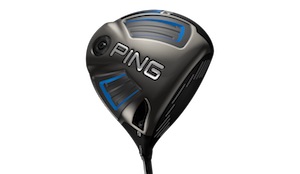 It is often said that nature often inspires the best designs. It is evolution that often provides the simplest and most beautiful solution to many problems. So when PING engineers sat down to improve upon one of the best drivers on the market, the G30, they looked to nature. The engineers who worked on PING G driver looked to nature to inspire and improve their design; in fact, they looked to the wings of a dragonfly.
It is often said that nature often inspires the best designs. It is evolution that often provides the simplest and most beautiful solution to many problems. So when PING engineers sat down to improve upon one of the best drivers on the market, the G30, they looked to nature. The engineers who worked on PING G driver looked to nature to inspire and improve their design; in fact, they looked to the wings of a dragonfly.
One of the key features of the extremely popular G30 was the turbulators that were added to the top of the clubhead. The features the PING engineers gleamed from the dragonfly were geared to further improve the airflow of the clubhead. More speed to help you hit it farther. The idea being that larger clubheads particularly ones that are 460cc do not need to trade off aerodynamics. So PING set out to make a driver that has the aerodynamic features of a 3 wood, but the forgiveness and power given from a driver.
For this review I was give a 9° PING G driver with an stiff Alta shaft. Let’s dive in to see if this merger of nature and technology helped me hit it any farther.Technology
When PING announced the G30 last year I am forced to admit that I was very suspicious that the “Turbulators” were going to last very long. But it is impossible to deny how extremely popular the G30 was and still is. At least half of the guys in my regular group have one. Looking to improve on this new technology PING engineers have further improved the Turbulator technology by introducing their new “Dragonfly technology.” The design inspired by a dragonfly’s wings further improves the aerodynamics of the clubhead to increase speed from the reduced drag by as much as 37% through the impact zone. That improvement translates to sizable distance gains from all swing speeds.
The Dragonfly technology has the added benefit that it gives the engineer the capability to move weight to different places on the driver. Any time that you can give a club designer the capability to move weight around, they are able to improve the weight distribution and move the Center of Gravity to improve or at the very least affect certain things. In this case the CG is in a better position (low/back) to provide higher launch and lower spin and to add more forgiveness for the golfer. The G driver has the lowest and deepest CG of any driver that PING has produced. This elevates the MOI of the driver significantly on both axes for maximum forgiveness.
When this new design is combined with the PING Vortec Velocity technology it truly becomes the total package. Vortec Velocity is designed to reduce turbulent wake during the downswing to increase the overall clubhead and ball speed. It has the added benefit of improving stability like the tail of an aircraft to help out with forgiveness. The Vortec Technology is another addition to the G versus the G30 driver.
The G driver is also equipped with a Variable-Thickness T9S face. The T9S which was also used on the G30 has a very high strength to weight ratio to help give the golfer an ultra thin face to increase ball speeds. The thin face also gives the designer more weight, in this case four grams to move the CG deeper into the clubhead to help with forgiveness.
As is the case with almost all of the new drivers on the market PING offers the capability to adjust the loft on the driver with their lightweight aluminum hosel sleeve. The nice thing that PING has done is made it really simple. With simple plus and minus signs it makes understanding the adjustment you are trying to make very simple and intuitive. As always when looking to buy a PING driver you also have the capability to custom fit the driver just for you. There are a number of shaft options that can chose from.
Esthetics
When you take the head cover off this driver, the dragonfly inspired design is immediately noticeable. The driver looks to me, like it comes from the future. Honestly, my first thoughts went to The Bionic Man. It has an exoskeletal type of look. The top of the clubhead is finished in a matte black to help with glare and keeps the overall design from looking over complicated. The Turbulators on the front edge of the top near the face stick out and then blend back into the dragonfly design. This gives the appearance of a very cohesive design pattern.
As was outlined in our G30 review, the Turbulators have the added feature of alignment while the club is set at address. They act to frame the ball and help the golfer properly align to the intended target. There is no “sweetspot” marker as with many of the other drivers on the market so it seems that utilizing the Turbulators as an alignment aid was the intention of the PING design engineers.
The bottom side of the club differs from the G30 quite a bit. The PING logo still done in white on a black background is now straight and not curved on the club. It is also a bit smaller than the G30 design. The heel and toe on the bottom are accented in blue and are a sort of a well with steps inside the well. The black is a polished black versus the matte black on the top of the clubhead and really makes the PING logo and blue accents pop. At the back of the bottom of the club there is a weight screw likely where PING’s engineers utilize different metals in order to help move the CG around inside the driver. This screw does not appear as thought it can be removed although it could give a club fitter a potential avenue to make some adjustments if needed.
The back of the driver has the Vortec Technology pocket. It is basically a rectangle inside another rectangle and is done in the matte black of the rest of the top side of the driver. The label “Vortec” done in a very soft white sits right above the rectangle arrangement. The Vortec feature is not extremely noticeable when you have the club at address, or also when it sits in your bag.
The face of the driver is pretty much a standard design found on all of PING’s recent drivers. The sweetspot area, or rather where the ball is hit is without any scoring lines, and the area near the toe and heel has a few scoring lines painted on to frame the ball when the club is at address. The design of the face fits in with the overall theme of the driver.
The heel of the club has the screw to enable the golfer to adjust the loft. The head cover is done mostly in black with white and blue accents. The main material is a synthetic leather but the sides are done in flexible fabric to allow you to get the driver in and out of the cover easily. The shaft has both blue and black coloring with the bottom portion which plugs into the driver being black to match the black clubhead and about halfway up the shaft there is a transition to the soft royal blue of the driver itself. The shaft matches beautifully to the rest of the club.
Performance and Feel
With how impressive the G30 is, I was intrigued to see if and how PING improved with the G driver when it comes to performance. Once again I was left impressed with how the club performed. When the ball struck the club face it felt almost like effortless power. The ball shot off the face and seemed to carry forever. While I did not experience a massive increase in yardage I did feel that on a number of well struck drives I was walking just a little bit further than before. The Alta shaft is on the light side as shafts go and therefore the club did feel a little light. This for the most part helped to increase my swing speed ever so slightly, but the trade off was a little accuracy.
The biggest improvement over the G30 was the sound. It seems the PING engineers heard the feedback on the G30 and immediately took actions to improve this. I would rank this driver extremely highly on sound dynamics. Muted however just enough to let you know where on the face you hit it on mishits. A big pat on the back to the PING engineers for this. If you purchased the G30 and the sound was something you didn’t like I highly recommend you try the G.
Mishits on the driver were on par with the G30 I borrowed from my regular group, although I would say toe hits performed better on average. Heel hits were roughly the same. I think the heel may be a potential weakness of this driver, as some of the heel hits particularly when done low on the face went shorter than expected given the contact location. When I hit the ball on the sweetspot the smash factor was very high.
The workability of this driver was very positive from my experience. I had fears that the G driver which for PING is generally targeted at mid- to slightly higher-handicap golfers, was going to be light on the workability scale. This driver certainly surprised me in that department. I was able to hit a fade or draw when I wanted to which is not something I can do with many of the other drivers on the market today.
Conclusion
With the success of the G30 driver the biggest question from everyone who saw me with the G was should I upgrade. I always try to treat this question carefully because there are times while doing reviews where the previous model was at least equal to the model that I was reviewing at that time. In this case I have to say that the improvements made by PING warrant the G30 users to head down to their local shop to give it a try. I think the improvements are not going to blow you away, but I think they will impress you enough to potentially pull the trigger on the upgrade.
If you are in search of a new driver and want to try a number of different options I can’t recommend trying the PING G driver enough. I think properly fit to your swing including the different shaft options available you will almost certainly find a configuration that helps you hit the ball far and straight.
When you have such a success as the G30 PING engineers likely need to think carefully about how to make improvements that golfers can see. I think the engineering team at PING has successfully created an excellent successor to the G30 driver.
The design on the top of the driver may take some getting used to for a lot of golfers. We have sort of become accustomed to looking at flat finishes without a great deal going on when the driver is placed next to the ball. Because the driver is done with the matte black I think after a few range sessions this will not be an issue.

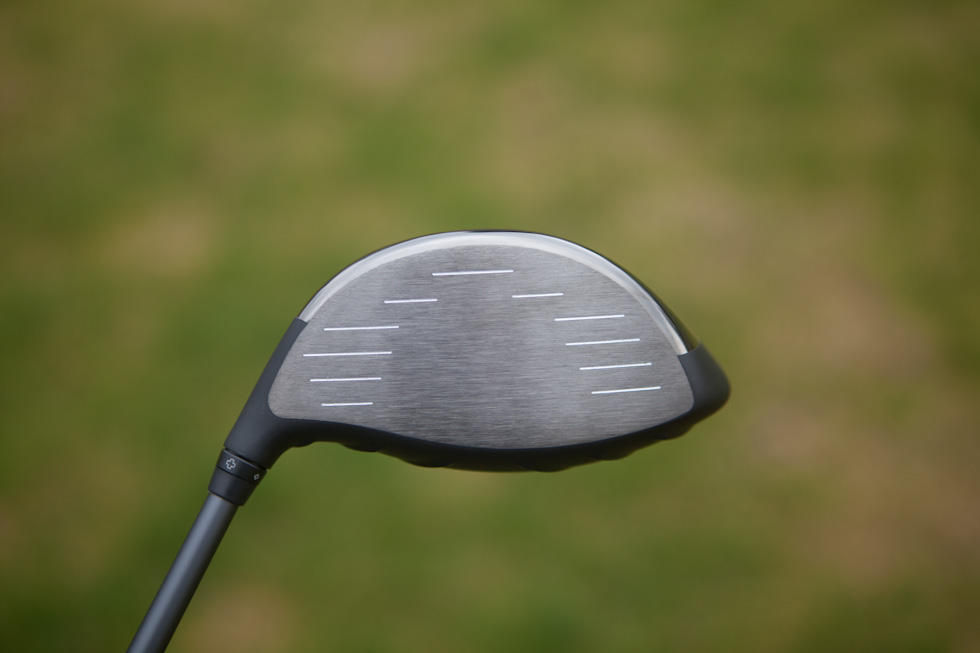
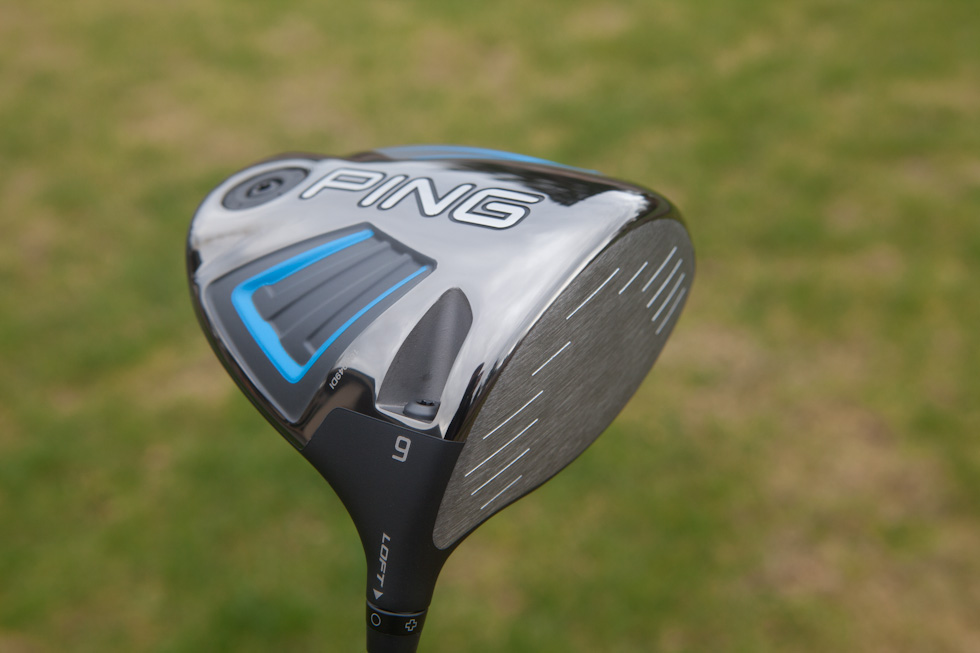
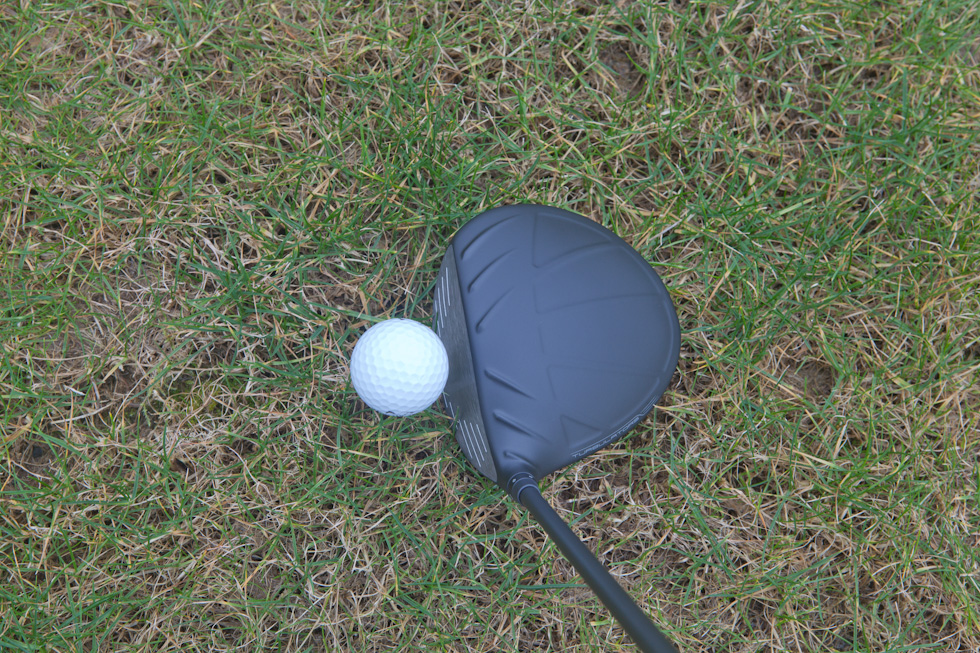
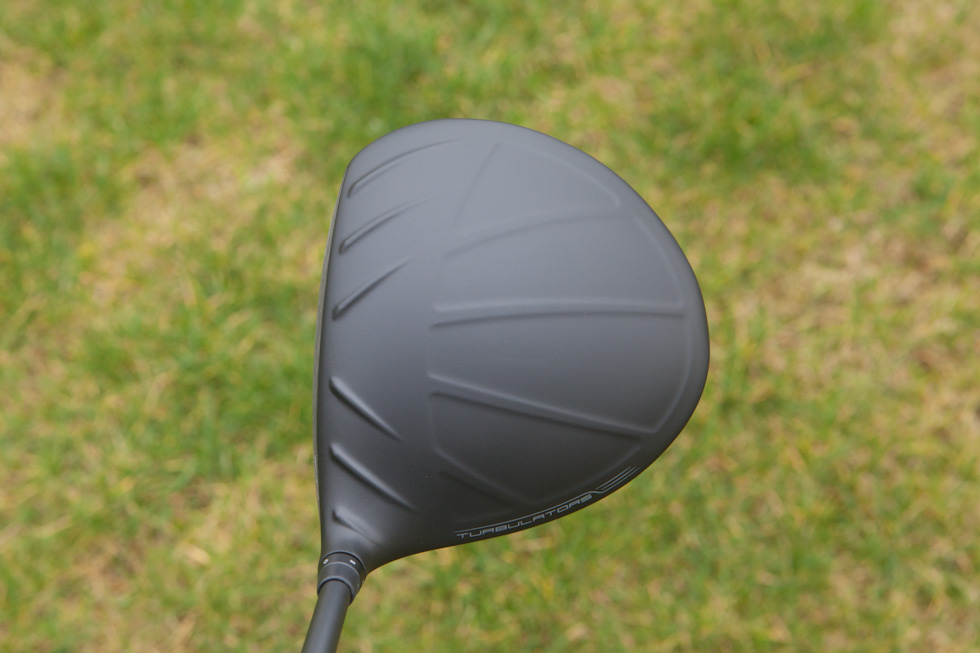
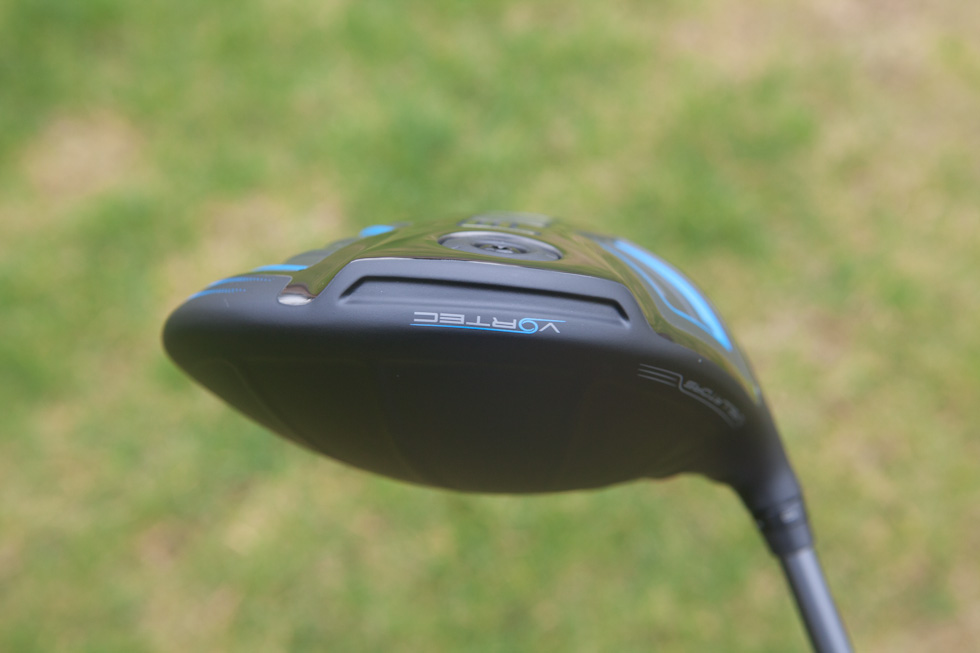
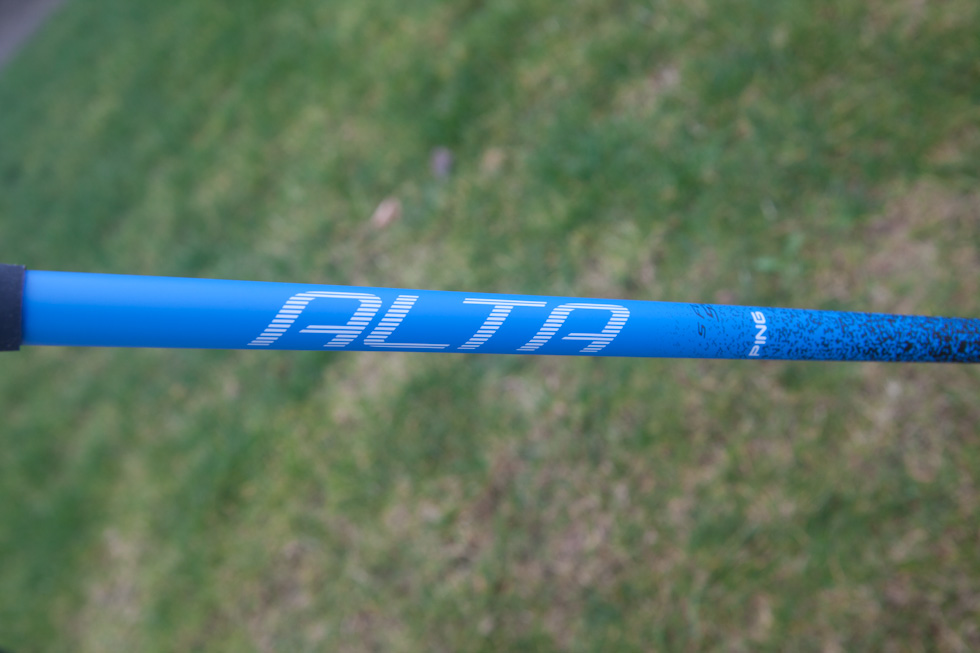
Nice to hear that you could work the ball with this driver.